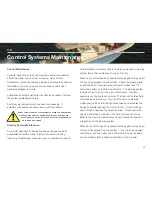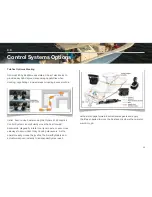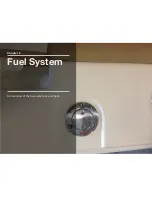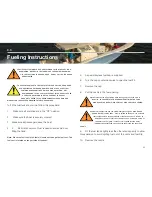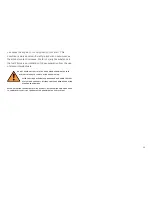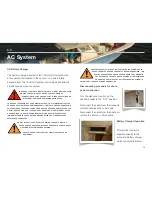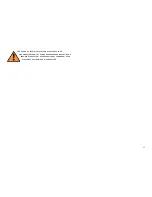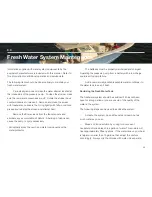
owner’s manual for more information on the fuses, fuse panels or
circuit breakers on your engines.
PROPER FUSE OR BREAKER PROTECTION MUST BE PROVIDED FOR ALL
12-VOLT EQUIPMENT ADDED. DO NOT OVERLOAD THE ACCESSORY
CIRCUIT BREAKERS OR OTHER CIRCUITRY THROUGH ADDITIONAL
12-VOLT EQUIPMENT.
Batteries and Battery Switches
The DC electrical systems and the engines on your boat are
designed for wet cell, marine batteries. Do not attempt to use gel
cell or absorbed wet mat batteries. The engine charging system is
not designed to recharge these batteries which could cause
unusually short battery life or engine starting problems. You also
should not mix the size or brand of the batteries. Always consult
your Scout dealer before changing the type of batteries in your
boat.
Your boat has provisions for 4 batteries, 1 for the port engine, 1
for the starboard engine and 2 that are hooked in parallel for all
other 12-volt accessories or electronics (house battery bank). If
the batteries are changed the house batteries should stay at the
same size and capacity or consider increasing the capacity if you
will be trolling, drift fishing or have extensive electronics on board.
Larger batteries will give you additional capacity to operate the
bait well, wash down and electronics at low speed when the
charging system output of the engines is minimal. The engine
batteries should be of size and capacity recommended by the
manufacturer of your engine. See the engine owner’s manual.
There are (3) motorized battery switches located on the main
distribution panel inside the console. One battery switch feeds
the port, one feeds the starboard engine and the third switch
activates the house and 12-volt accessory circuits.
Each engine charges the battery that feeds it. Each engine also
charges the house bank through a VSR (voltage sensitive relay)
battery isolator system and through the engine isolator charging
circuit. The VSR and the engine isolator charging circuit manage
the charging current for the 12-volt system whenever the engines
are running. These systems automatically sense the condition of
42
Summary of Contents for 320 LXF
Page 1: ...320 LXF Scout Boats OWNER MANUAL ...
Page 2: ...Chapter 1 Owner s Information Warranty Certification and Boat Information ...
Page 11: ...Chapter 2 Propulsion A guide to your boat s propulsion system ...
Page 32: ...Chapter 4 Fuel System An overview of the fuel system of your boat ...
Page 40: ...Chapter 5 Electrical System An overview of the electrical system of your boat ...
Page 54: ...Chapter 6 Fresh Water System An overview of the fresh water system of your boat ...
Page 59: ...Chapter 7 Raw Water System An overview of the raw water system of your boat ...
Page 65: ...Chapter 8 Drainage System An overview of the drainage system of your boat ...
Page 70: ...Chapter 9 Ventilation System An overview of the ventilation system of your boat ...
Page 73: ...Chapter 10 Exterior Equipment An overview of the exterior equipment on your boat ...
Page 83: ...Chapter 11 Interior Equipment An overview of the interior equipment on your boat ...
Page 88: ...Chapter 12 Safety Equipment An overview of the safety equipment on your boat ...
Page 99: ...Chapter 13 Operation A general guide to operating your boat ...
Page 124: ...Chapter 14 Routine Maintenance A guide to keeping your boat running in good condition ...
Page 147: ...Chapter 16 Appendix Reference documents logs and schematics for your boat ...
Page 154: ...153 ...
Page 155: ...154 ...
Page 156: ...155 ...
Page 157: ...156 ...
Page 159: ...158 ...
Page 160: ...159 ...
Page 162: ...161 ...

